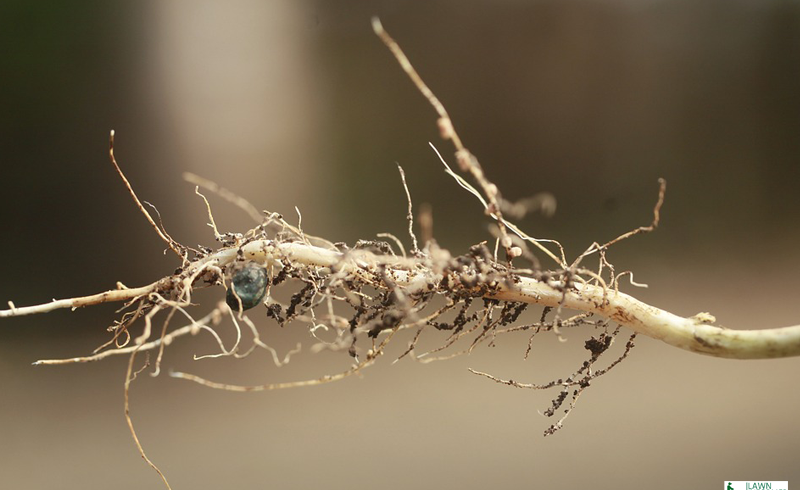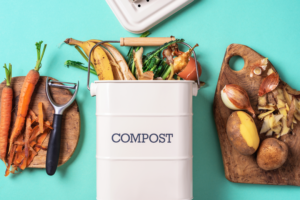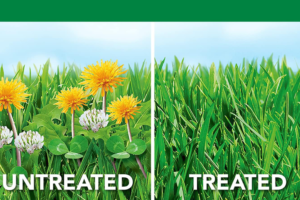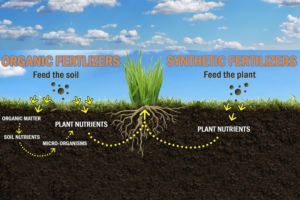
Introduction
The Indispensable Role of Fertilizers in Our Gardens
Every gardener knows the magic touch fertilizers bring to our gardens and lawns. These essential mixtures have been the backbone of lush, green landscapes for over a century. Think about it: without the groundbreaking Haber–Bosch method of creating ammonia, introduced in 1913, our gardens might not have the vibrant life they do today. This process paved the way for the nitrogen-rich fertilizers we use, which are crucial in producing more than half of the world’s food. And as our global population grows, the demand for these fertilizers will only increase.
The Double-Edged Sword of Nitrogen
Every gardener knows the magic of nitrogen. It’s like a superfood for plants, helping them grow strong and vibrant. When we feed our gardens with nitrogen, we see them come alive, bursting with life and color.
But There’s a Catch However, there’s a downside. If we overdo it, plants can’t soak up all that nitrogen. What’s left behind can harm our environment, affecting our water and soil. It’s a balancing act. We want our gardens to thrive, but we also have to think about the bigger picture. By using nitrogen smartly, we can have the best of both worlds: a lush garden and a healthy planet.
Why Consider Slow-Release Fertilizers for Your Lawn?
The Dual Benefits of Slow-Release Fertilizers
Slow-release fertilizers could be the answer to this quest. These fertilizers are designed to give plants nutrients at a steady pace, ensuring they get the right amount of nourishment over time. This means you won’t have to fertilize your lawn as often, saving time and money. Plus, because these fertilizers release nutrients gradually, there’s less risk of nutrient runoff, which can harm our environment.
Efficiency Meets Environmental Responsibility
Traditional fertilizers can sometimes release nutrients too quickly, leading to wastage. When nutrients, especially nitrogen, are washed away by rain or irrigation, they can pollute our waterways. Slow-release fertilizers, on the other hand, are designed to minimize this risk. They retain nutrients in the soil for longer, making them available to plants when needed. This not only improves the health and appearance of your lawn but also reduces the environmental impact. Imagine achieving a lush lawn while also doing your bit for the planet!
The Drawbacks of Conventional Lawn Fertilizers
Environmental Impact of Over-Fertilizing
Every lawn enthusiast wants a lush, green space, but sometimes our efforts to achieve this can have unintended consequences. While fertilizers are essential for lawn health, using them excessively can lead to significant environmental issues. Here’s what happens:
- Eutrophication: When excess nitrogen from fertilizers finds its way into water bodies, it can lead to an overgrowth of algae. This process, known as eutrophication, can harm aquatic life by depleting oxygen levels in the water.
- Dead Zones: These are areas in oceans and large lakes where oxygen levels are so low that marine life can’t survive. The runoff of excess nitrates from fertilizers often causes them.
- Greenhouse Gas Emissions: Nitrous oxide, a byproduct of excessive nitrogen in the soil, is a potent greenhouse gas. Its impact on global warming is significant, making it the third most crucial greenhouse gas after CO2 and methane.
Soil Health and Quality
It’s not just the environment at large that suffers. Our very own gardens and lawns can face challenges due to over-fertilization:
- Soil Acidification: Too much fertilizer can make the soil acidic over time. This change in pH can harm the beneficial microorganisms in the soil and affect plant growth.
- Depletion of Essential Nutrients: Over time, excessive fertilizer use can strip the soil of vital nutrients, making it less fertile.
- Contamination Risks: Some fertilizers may contain heavy metals, which, when used in large amounts, can contaminate the soil.
The Need for a Balanced Approach
While fertilizers are pivotal in achieving our dream lawns, using them judiciously is essential. Modern lawn care practices emphasize precision farming, optimized watering schedules, and eco-friendly fertilizers. By adopting these methods, we can ensure our lawns thrive without compromising the environment.
A Leap Forward: Biodegradable Fertilizer Coatings
The Need for a Sustainable Shift
Gardeners and landscapers have relied on traditional fertilizers to nourish their lawns and gardens for years. But with growing environmental concerns, there’s a pressing need for more sustainable solutions. Enter biodegradable fertilizer coatings. These coatings are designed to release nutrients slowly, ensuring plants get what they need over time.
But what makes them truly special is their eco-friendly nature. Unlike conventional coatings, which can linger in the environment, biodegradable coatings break down naturally, reducing their environmental footprint.
The Magic Ingredient: Poly(3-hydroxybutyrate) or P3HB
So, what’s the secret behind these innovative coatings? It’s a material called poly(3-hydroxybutyrate), or P3HB for short. This biodegradable substance is derived from waste cooking oil, making it eco-friendly and sustainable. P3HB ensures a slow and steady release of nutrients when used to coat fertilizer pellets.
This means plants get a consistent supply of nourishment, and there’s less risk of nutrient wastage or runoff. Plus, because P3HB is biodegradable, it doesn’t contribute to environmental pollution.
The Science Behind the Coating Process
Creating these eco-friendly fertilizer pellets involves a meticulous process. First, a solution of P3HB is prepared. This solution is then applied to the fertilizer pellets through immersion. The result? Fertilizer pellets with a high-quality, water-resistant coating.
These coated pellets were tested, and the results were promising. Even after being submerged in water for over two months, the pellets retained most nutrients, releasing only a fraction into the water. This slow-release action ensures that plants have a steady supply of nutrients over an extended period.
A Win for the Environment and Your Garden
The benefits of biodegradable fertilizer coatings extend beyond just your garden. By reducing nutrient runoff, these coatings help protect our waterways from pollution. And because they break down naturally, they don’t contribute to the growing plastic waste problem. For gardeners and landscapers, this means achieving a lush, green lawn or garden without compromising the health of our planet.
The Science Behind P3HB-Coated Fertilizers
The Birth of a New Fertilizer Solution
We often turn to fertilizers for a greener lawn and garden. But what if there was a fertilizer that combined the best of both worlds: effectiveness and eco-friendliness? That’s where P3HB-coated fertilizers come into play. These fertilizers blend traditional nutrients and a special ingredient called P3HB. This combination ensures that plants get the necessary nutrients while minimizing environmental impact.
Why P3HB Makes a Difference
P3HB, or poly(3-hydroxybutyrate), is a biodegradable material. When used as a coating for fertilizer pellets, it ensures that nutrients are released slowly and steadily. This slow-release action is beneficial for several reasons:
- Consistent Nourishment: Plants get a steady supply of nutrients over time, ensuring they remain healthy and vibrant.
- Reduced Wastage: With nutrients being released gradually, there’s less risk of them getting washed away by rain or irrigation.
- Eco-friendly: P3HB is derived from sustainable sources like waste cooking oil. Plus, being biodegradable, it doesn’t contribute to environmental pollution.
The Making of P3HB-Coated Fertilizers
Creating these special fertilizer pellets is a meticulous process. First, a blend of traditional fertilizer and P3HB is prepared. This mixture is then shaped into pellets coated with a solution of P3HB. The coating process involves dipping the pellets multiple times in a P3HB solution, ensuring a high-quality, water-resistant finish. The result? Fertilizer pellets are not only practical but also kind to the environment.
A Testament to Quality
The effectiveness of these P3HB-coated fertilizers was put to the test in a series of experiments. The results were promising. Even when submerged in water, the pellets released nutrients at a controlled rate, proving their potential for gradual nutrient release in garden soil.
Evaluating the Performance of Eco-Friendly Fertilizers
Putting the Fertilizers to the Test
When it comes to lawn care, seeing is believing. Scientists took these eco-friendly fertilizers for a spin in a controlled environment. They wanted to see how these fertilizers, with their special P3HB coating, would perform in real-world conditions. The goal was to understand how effectively these fertilizers release nutrients and how they impact plant growth.
Putting Theory to the test: The Greenhouse Lawn Experiment
Setting the Stage for the Experiment
When discussing fertilizers, it’s one thing to discuss their potential benefits, but it’s another to see them in action. To truly understand how these P3HB-coated fertilizers work, scientists set up a controlled experiment in a greenhouse. They used pots filled with soil and planted corn maize to see how it would respond to these new fertilizers. The goal was to observe how the fertilizers would affect plant growth and the soil’s nitrogen levels over time.
The Experiment’s Blueprint
Each pot was carefully prepared with a specific amount of soil, and maize seeds were sown. The fertilizers were then spread evenly over the soil. All pots were watered to the same level throughout the experiment to ensure consistency. As the maize plants grew, the scientists monitored various factors, including the soil’s nitrogen content and the health and growth of the plants.
Digging Deeper: Soil and Plant Analysis
The scientists took soil samples from different depths within the pots every few weeks. They were particularly interested in the levels of two types of nitrogen: ammonium and nitrate. These nitrogen forms are essential for plant growth, and by monitoring their levels, the scientists could gauge how effectively the P3HB-coated fertilizers were releasing their nutrients.
Observing the Plants
But the soil wasn’t the only focus. The maize plants themselves were under close observation. The scientists looked at various indicators of plant health, such as the chlorophyll content (which gives plants their green color) and the overall weight and size of the plants. They also measured the plants’ root systems, as a healthy root system is a good sign of overall plant health.
What the Results Revealed
The greenhouse experiment provided valuable insights into the performance of P3HB-coated fertilizers. The maize plants showed promising growth, and the soil’s nitrogen levels indicated that the fertilizers were releasing their nutrients optimally. In short, the experiment confirmed that these eco-friendly fertilizers could be a game-changer for gardeners and landscapers looking for sustainable lawn care solutions.
FAQ’s
What exactly are P3HB-coated fertilizers?
P3HB-coated fertilizers are innovative fertilizers where the pellets are enveloped in a biodegradable material named P3HB (poly(3-hydroxybutyrate)). This unique coating ensures nutrients are released to plants steadily, optimizing growth while being environmentally friendly.
How do these fertilizers benefit our environment?
These fertilizers are a boon for the environment. The P3HB coating is biodegradable, breaking down naturally without leaving harmful residues. Moreover, the controlled release of nutrients minimizes the risk of nutrient runoff, protecting water sources from potential pollution.
How was the effectiveness of P3HB-coated fertilizers determined?
The effectiveness was gauged through a detailed greenhouse experiment. Scientists planted maize in pots, treated them with these special fertilizers, and closely monitored various growth parameters and soil nutrient levels over time.
Can I use P3HB-coated fertilizers for plants other than maize?
The study primarily focused on maize, which responded positively to the P3HB-coated fertilizers. While this is promising, consulting with gardening experts or conducting smaller tests before using them extensively for other plants is recommended.
Are these fertilizers an excellent alternative to the traditional ones I’ve been using?
The study suggests that P3HB-coated fertilizers can be an effective and eco-friendly alternative to traditional fertilizers. They not only support robust plant growth but also contribute to environmental conservation.
Conclusion
Summing Up the Findings
The journey of exploring P3HB-coated fertilizers has been enlightening. These innovative fertilizers have shown that they can be a game-changer for gardeners and landscapers. The experiments conducted in controlled environments, like the greenhouse, revealed that these fertilizers release nutrients at an optimal pace and support robust plant growth.
The Impact on Plant Growth
One of the standout findings was the correlation between the soil’s health and the plants’ health. The plants thrived when the soil was rich in nutrients, especially nitrogen. This was evident in the maize plants used in the study, which showcased impressive growth when treated with P3HB-coated fertilizers. The root size of the plants, a critical indicator of their health, was also notably larger with these fertilizers.
Chlorophyll Content: A Sign of Healthy Plants
Every gardener knows that a lush green plant is a sign of good health. The chlorophyll content in plants, which gives them their green hue, is directly linked to the amount of nitrogen they receive. The study found that plants treated with P3HB-coated fertilizers had higher chlorophyll content, indicating they were getting the right amount of nitrogen.
A Look at Traditional Fertilizers
While the P3HB-coated fertilizers were star performers, it’s essential to note how they compared to traditional fertilizers. In the later stages of growth, plants treated with conventional fertilizers showed signs of nitrogen deficiency. This wasn’t the case with the P3HB-coated fertilizers, which ensured a steady nutrient supply throughout the growth cycle.
Final Thoughts for Gardeners and Landscapers
The message is clear for those passionate about their lawns and gardens: P3HB-coated fertilizers are worth considering. They offer a sustainable and effective solution, ensuring plants get the nutrients they need while being kind to the environment. It’s an exciting time for lawn care, with innovations like these paving the way for greener and healthier gardens.
Credits:
Kontárová, Soňa, Přikryl, Radek, Škarpa, Petr, Kriška, Tomáš, Antošovský, Jiří, Gregušková, Zuzana, u. a. (2022): Slow-Release Nitrogen Fertilizers with Biodegradable Poly(3-hydroxybutyrate) Coating: Their Effect on the Growth of Maize and the Dynamics of N Release in Soil. Polymers, 14 (20), S. 4323 Online verfügbar unter: URL: https://dx.doi.org/10.3390/polym14204323

Bob Green, a passionate lawn care enthusiast with over two decades of landscaping experience, is this website’s proud owner. His vast knowledge of horticulture and dedication to helping homeowners maintain beautiful lawns are reflected in the valuable content he shares on his platform. John has always been interested in Agrostology.













